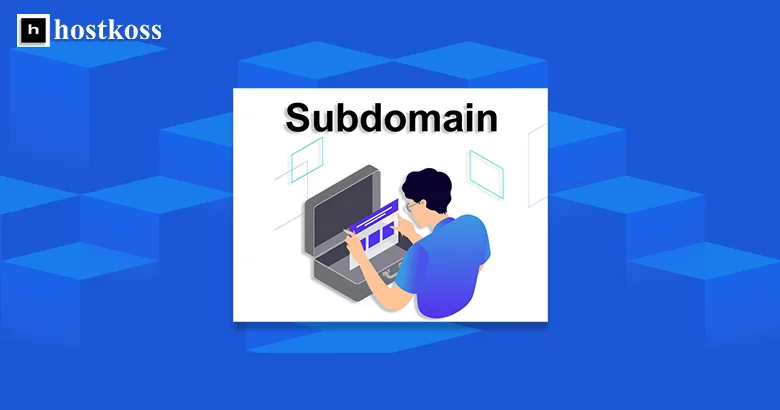A subdomain is a domain that is part of a larger domain. For example, if someone wants to have a website “example.com” and also wants to have “blog.example.com”, they would need to create a subdomain for the blog so that it doesn’t interfere with the main one. Web site.
A subdomain is also called a “subdirectory” or “subdomain” and can be used to organize content by separating it from other content on the same site or to add additional features such as an email address or FTP server. through its own URL without affecting other site features.
What are the benefits of owning a subdomain?
When you have a subdomain, you can have your own personal space online. You can use it for anything from a personal blog to an online portfolio.
Owning a subdomain is not as expensive as buying your own domain name and hosting, which means it’s perfect for people who are just starting their online business, or those who don’t have a big budget.
Owning a subdomain also gives you more control over your content because you are the only person responsible for it. That way, if someone tries to remove your content or steal it, they will have violated your copyright and you can do something about it.
How do I create my own subdomains?
To create your own subdomains, you first need to buy your own domain name from a domain registrar such as hostkoss.com. Once you have purchased the domain name, log in to your hosting account and add the new subdomain to your hosting account’s DNS settings so that it points to a specific directory on the server.
Conclusion and tips on how to use your own subdomains
If you have a blog, website, or any other online property that you want to share with others, creating your own subdomain is a great way to do so.
You can use your own subdomain to increase traffic and engagement to your site. It also gives you more control over your content and how it is shared.
If you’re looking for an easy way to set up your own subdomain, all you need is a domain name and a hosting plan.
Read also:
FAQs
While many hosting providers offer unlimited subdomains, it’s essential to consider your hosting plan’s limitations and server resources.
Subdomains can influence overall SEO performance, but their impact depends on factors such as content quality, link structure, and keyword optimization.
In most cases, creating subdomains is included in your hosting plan at no additional cost. However, some premium features or services may incur extra charges.
Yes, you can transfer content between subdomains and the main domain as needed. It’s essential to set up proper redirects and maintain consistency for SEO purposes.
A domain is the main address of your website (e.g., www.example.com), while a subdomain is a subset of that domain (e.g., blog.example.com) used for specific purposes or sections.



